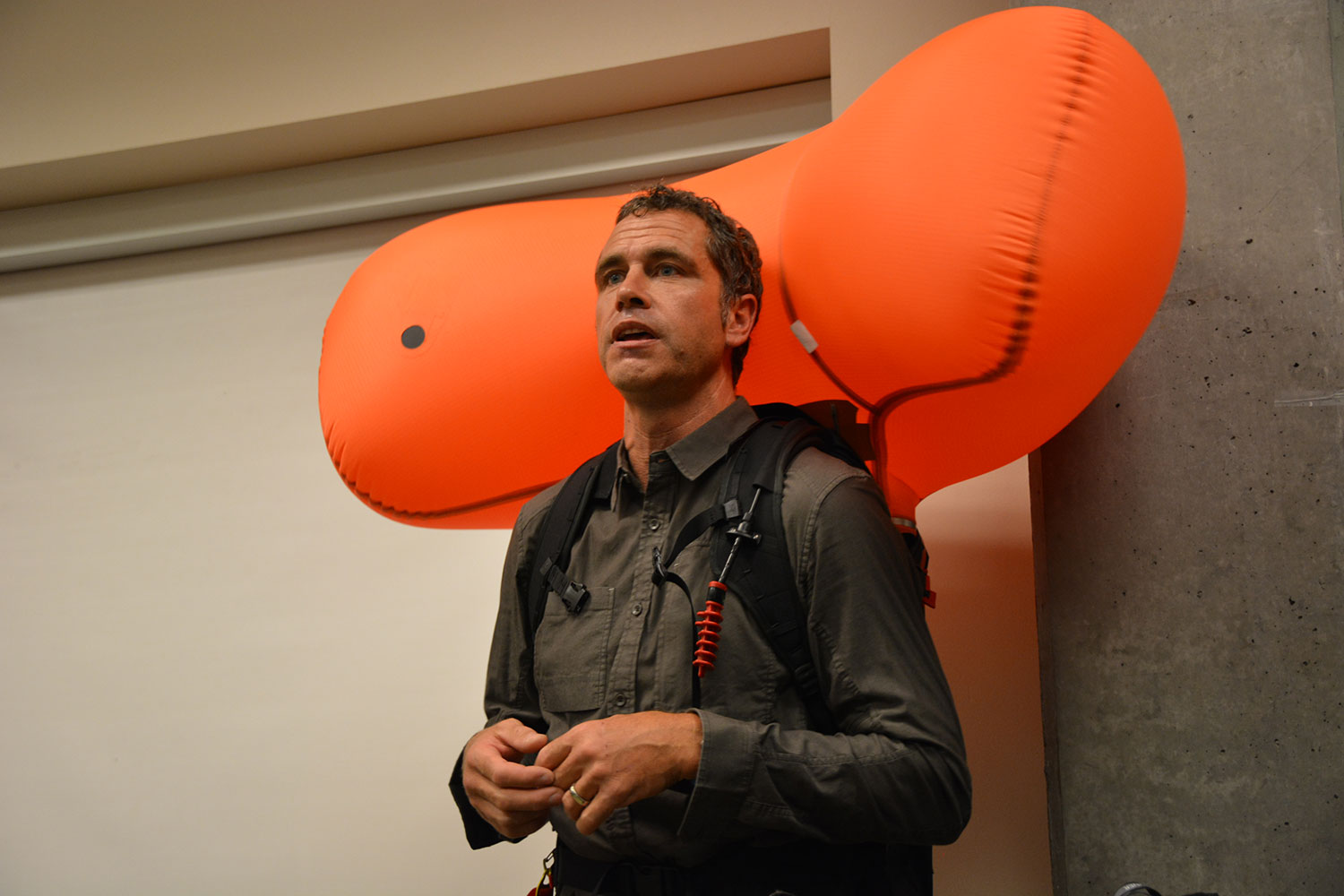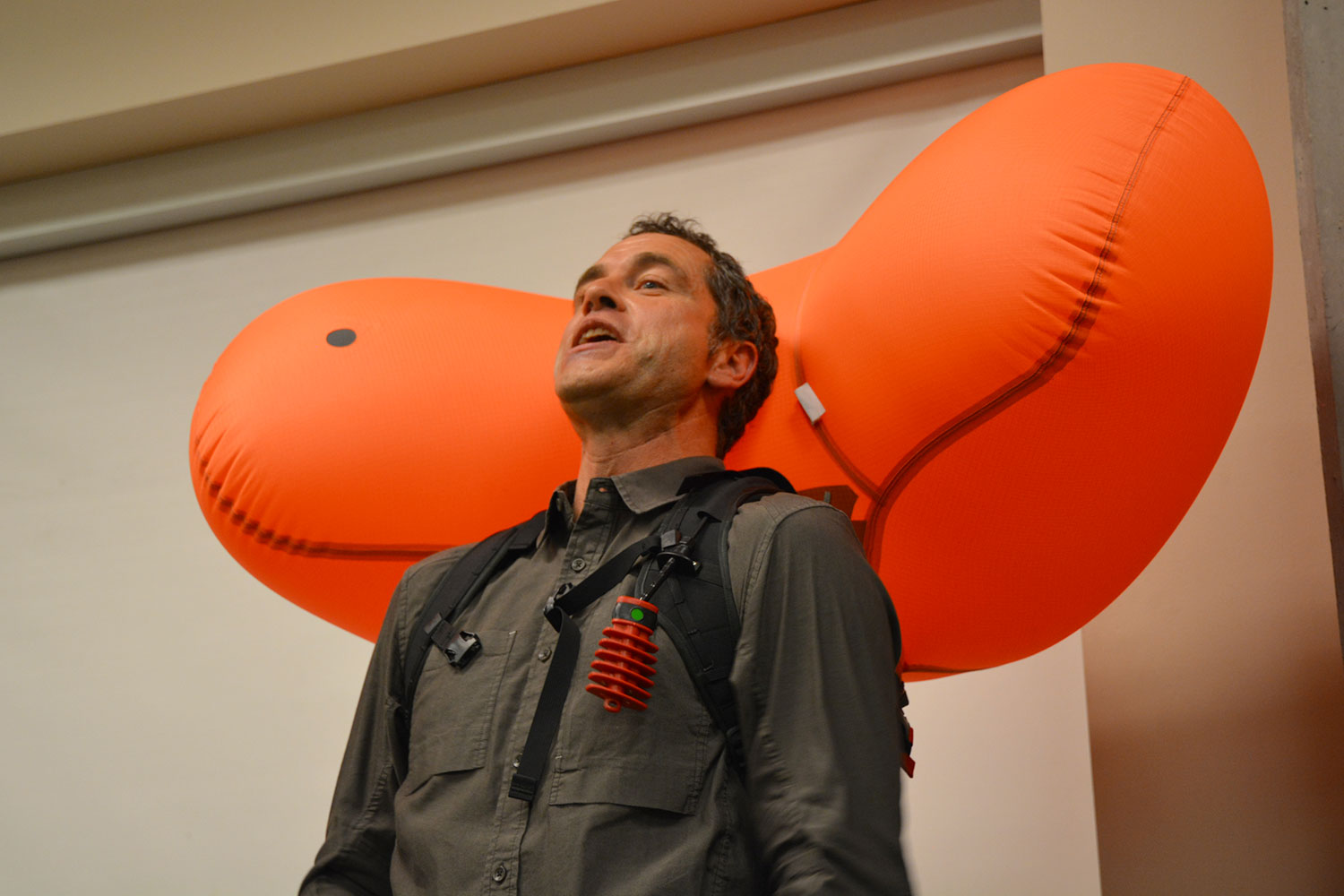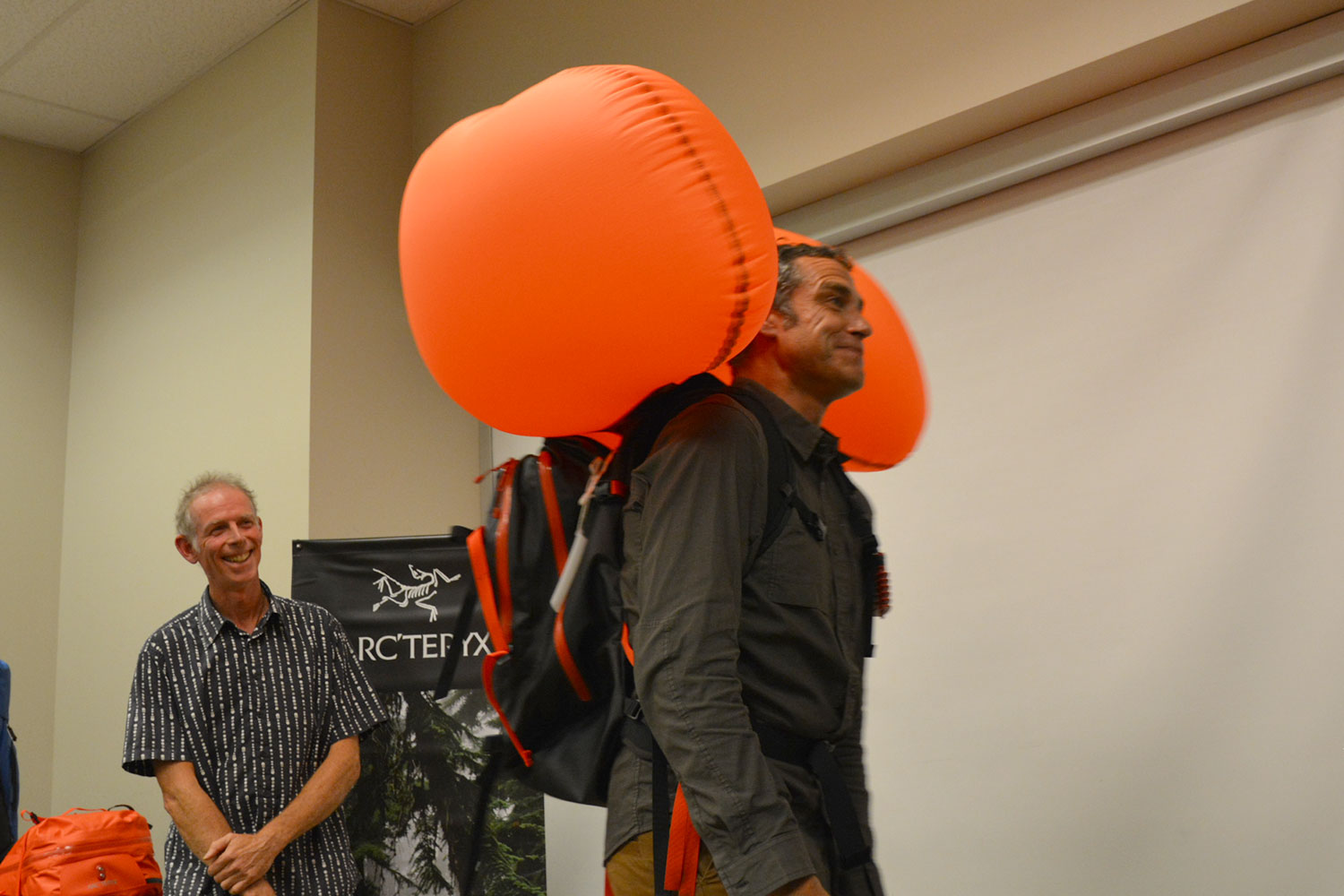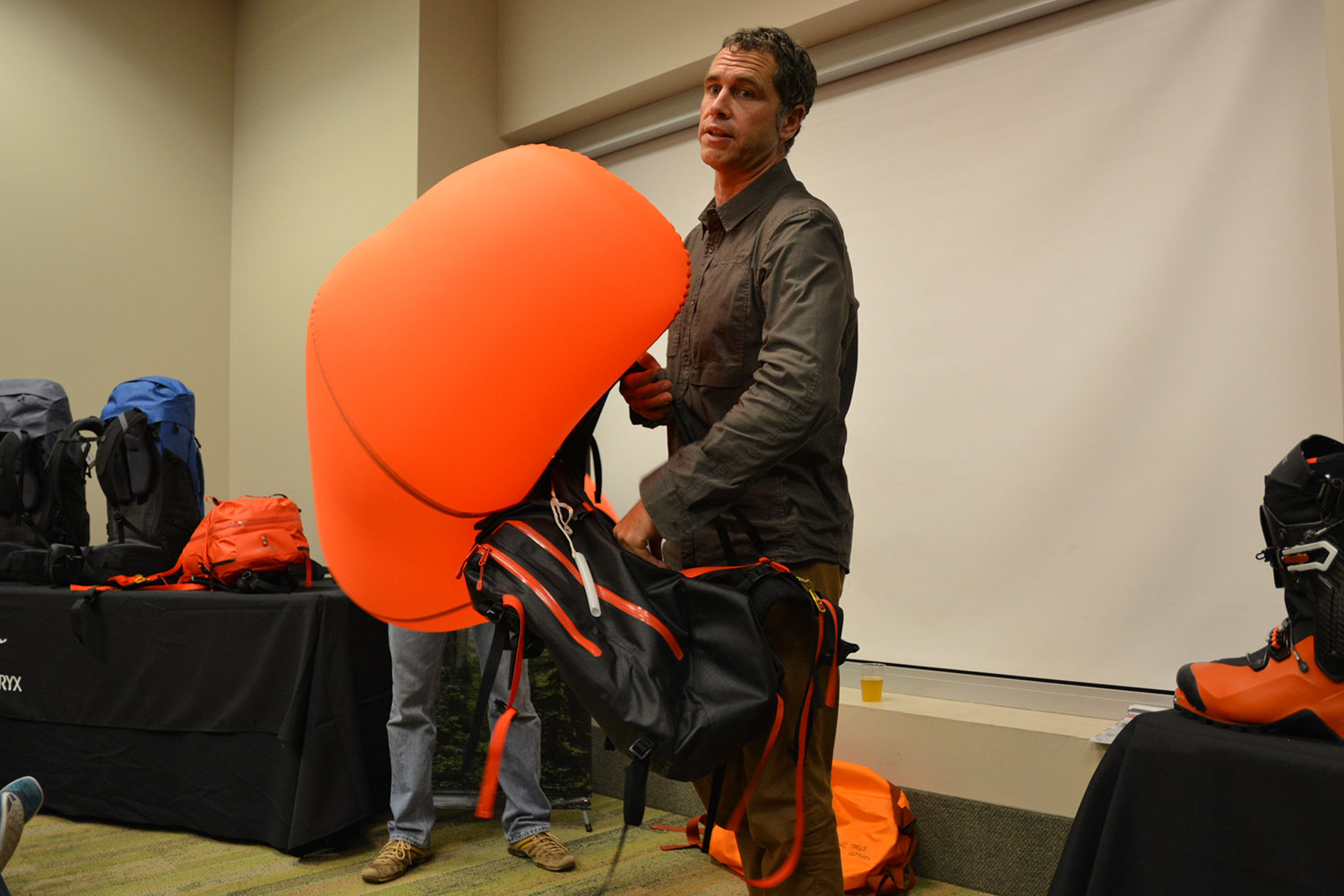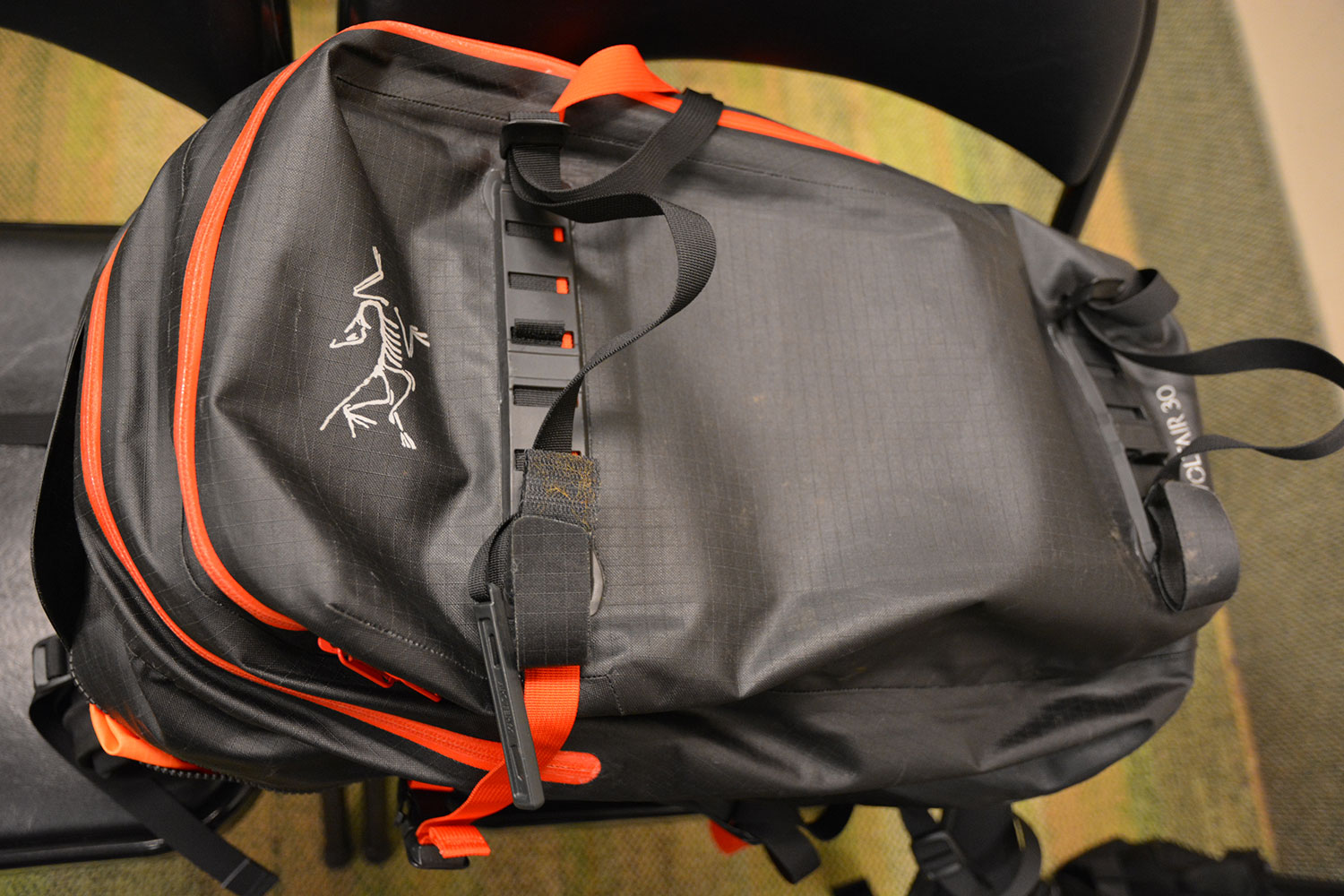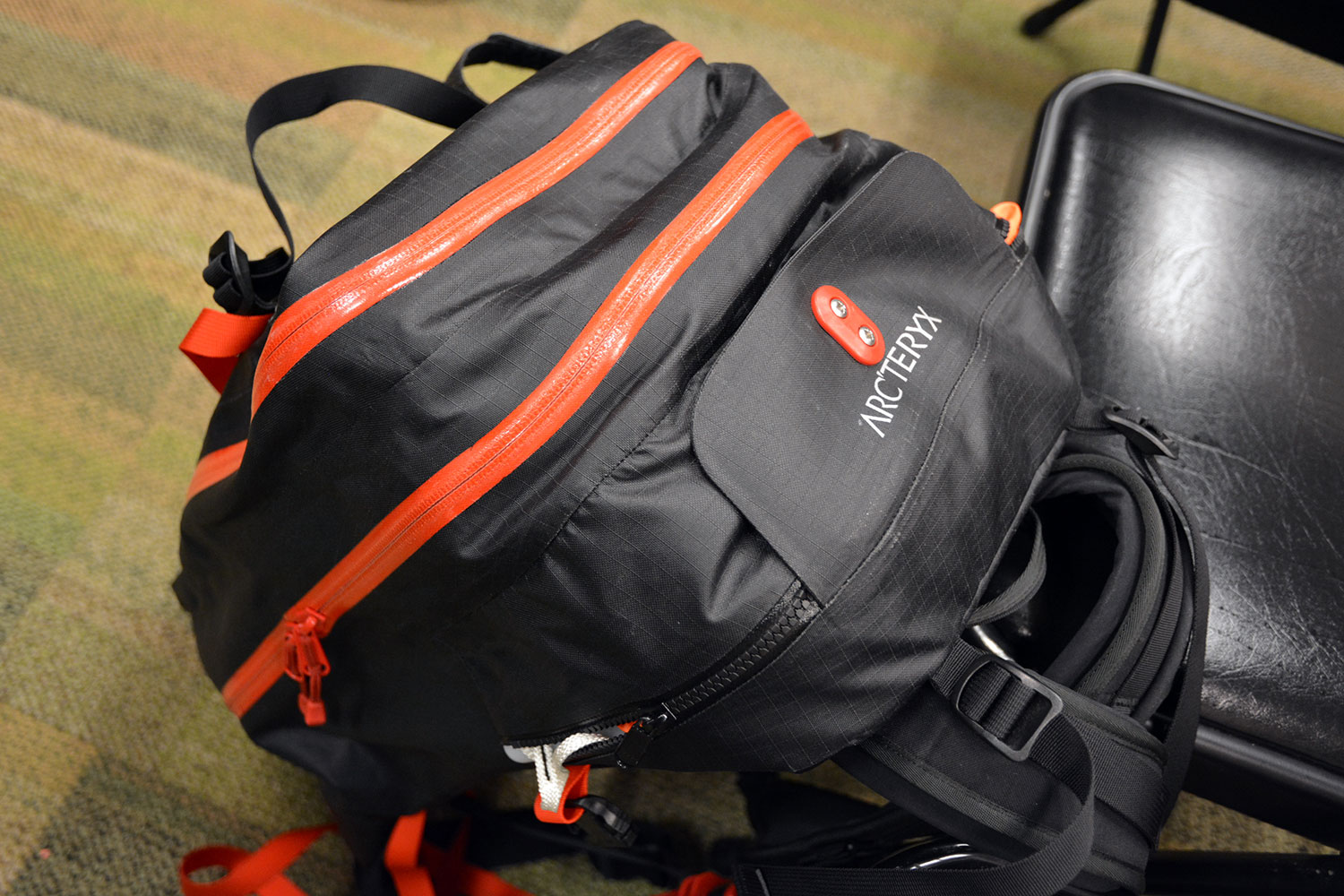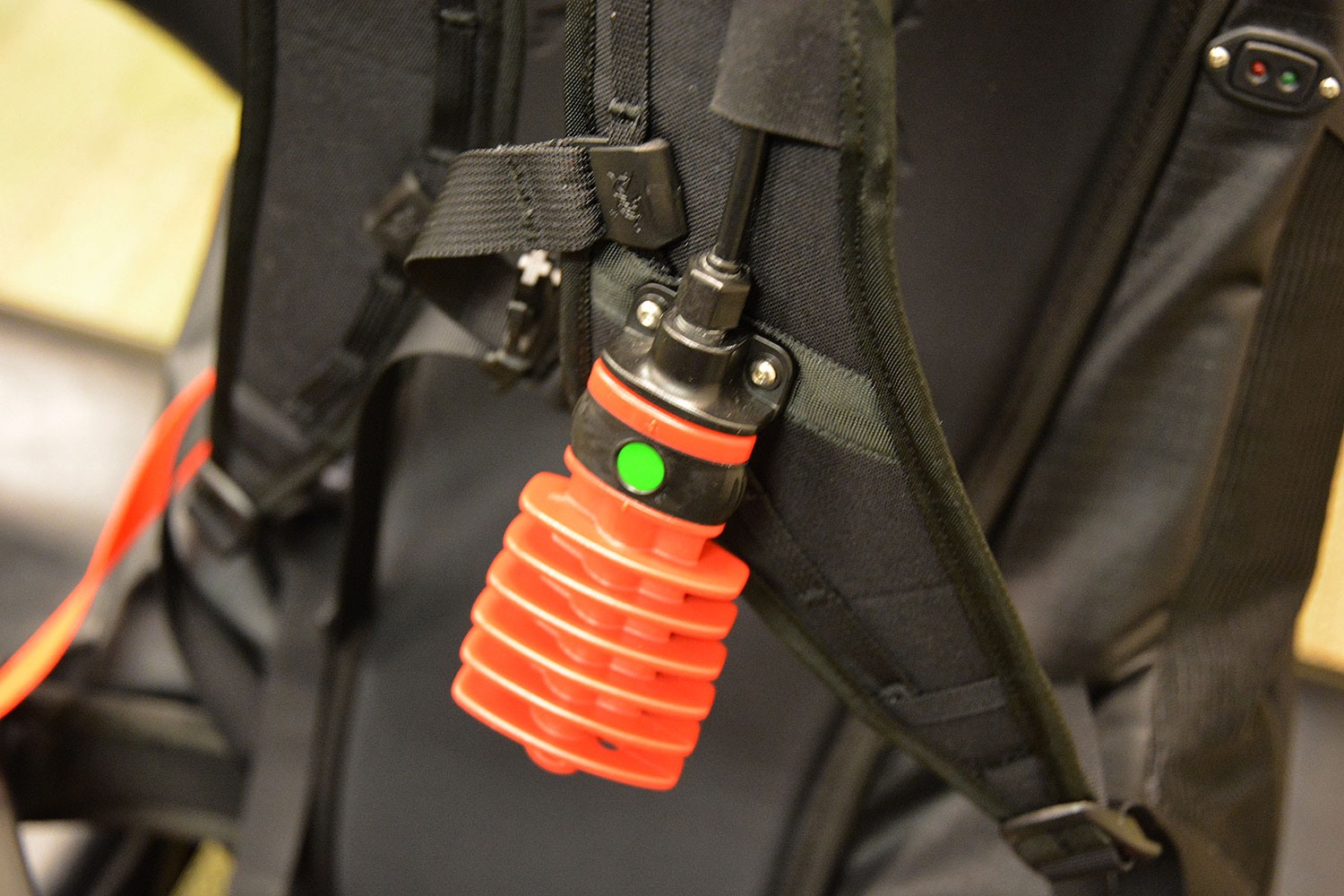For those who find their serenity while exploring the backcountry, there’s nothing more capable of breaking the peace than the threat of an avalanche.
While it’s futile to combat Mother Nature, high-tech gear like backpacks with airbags greatly increase chances of survival thanks to a phenomenon known as inverse segregation – also known as the Brazil nut effect: The largest particles rise to the surface in a vibrated granular mixture. In an avalanche, an inflated airbag greatly increases the size of the wearer, “floating” her to the surface.
Typically, avalanche packs inflate airbags with a single shot of compressed air from a cylinder. But Arc’teryx, a company based in North Vancouver, B.C., wasn’t satisfied with that single-use solution that leaves the pack useless until it’s refilled. This fall, it will launch the Voltair, an avalanche airbag that uses electric blowers rather than gas canisters for inflation.
“The challenges of a compressed air canister is that you can’t travel with it legally, for a lot of obvious reasons, and they have one charge, so once it’s discharged, it’s done,” said Arc’teryx representative Roger Strong. “You need to have a bunch of canisters either back at your car or home or base camp, so the beauty of having a battery change system is the multiple uses.”
When deployed, air canister avalanche packs are effective, but Arc’teryx found in its research that not all avalanche survivors deployed their airbags despite having them.
“We’re a tech company now. We have hardware and software and electronics engineers running around the halls.”
“We asked people who have survived an avalanche why didn’t they deploy their canister airbag, and some said it was fear of embarrassment [on a false alarm], or the fact that it’s just one pull that they were trying to conserve for the right time,” Strong said. “If you’re thinking about it for a few seconds, it might be too late. So we want the ability to pull at any given time.”
The single-shot nature of the canister system also prevented some users from getting adequate practice in deploying the airbag.
“Nobody that learns how to be in the backcountry and use a beacon just take it out of the box and go – it takes practice,” added Strong. “We want the ability to do that with the pack.”
After dismissing compressed air a decade ago, Arc’teryx returned to the drawing board in 2010 with the idea to use an electric blower with a rechargeable battery. At the time, there was no existing model, so the design team had to look outside the industry for inspiration. (It’s worth noting that Black Diamond released its JetForce electric airbag product in 2014, making the Arc’teryx Voltair the second entry in the electric airbag segment.) Compressed air canisters are great at moving a large volume of air very quickly, so Arc’teryx had to devise an electric-powered method that could deliver a similar result.
“It started by learning,” said Dan Jackson, a designer at Arc’teryx since the early days of the company. “We brought in some RC helicopters to see how fast those motors can spin, but we were looking at it like a bunch of doofuses.”
After weeks of testing RC helicopters, they found that they needed more power. The designers then looked at systems inside vacuum cleaners and found their solution.
“I had a hairy dog, and the vet said this is the vacuum cleaner you want. So we took it into work, ripped it to pieces, and holy cow, check this thing out, it really sucks!” said Jackson. That’s when the design team decided to adopt a centrifugal blower system.
Another benefit of an electric system over compressed gas is its ability to continuously maintain a level of pressure and inflation. Anything is possible in a disaster, including collisions with pointed and jagged objects that could puncture and tear the airbag. To mitigate this, the Voltair’s electric blower will continue to send air to the airbag in increments once deployed.
While lithium-based batteries are ubiquitous nowadays in personal technology, Arc’teryx needed a power source that could deliver high currents at low temperatures. Its engineers developed a fully custom lithium-polymer battery capable of eight pulls at -15 degrees Celsius and four pulls at -30 degrees Celsius – doubling the CE and UIAA safety standards – and it can be fully charged in two hours. Dyson has it easy in comparison, designing cordless vacuums for indoor, room-temperature environments.
“The battery chemistry alone was four years in the making. We became chemists and we associated with physicists,” said Jackson. “The battery system has to sit at -30 degrees Celsius for a week and still blow off.”
The demonstration unit that we experienced had not been charged in two months and had undergone 20 pulls, albeit all at room temperature.
“We’re not just talking about margins of comfort; we’re talking about margins of safety.”
Controlling the logic behind the battery and blower is a custom solution also developed through years of testing. Simply sending a command to send power to the blower to inflate the airbag may sound straightforward, but given that this piece of kit will be depended on in times of life or death, the engineers had to test for every possible failure possibility imaginable, and create a safeguard or redundancy.
“We’re a tech company now. We have hardware and software and electronics engineers running around the halls,” Jackson added. “When we started, it was one engineer who was more of a machinist and there was a bunch of designers saying, ‘this is what we’re going to do.’”
In light of the electronics behind the Voltair’s lifesaving inflation feature, the design team opted to go as simple and mechanical as possible for the triggering system. Arc’teryx experimented with fancy electrical switches, such as buttons on ski poles, but found that those came at the expense of reliability. The Voltair features a red handle attached to the shoulder strap. To deploy the airbag, the user must unlock the mechanism with the twist of the handle, and then pull down to trigger the inflation. It’s simple, but not something that’ll accidentally happen automatically through normal activity.
Despite all the testing Arc’teryx has done leading up to the release of the Voltair, there are bound to be real-world scenarios with untested conditions. The Voltair packs an array of sensors that will record data points that include the date, time, temperature change, and system processes every time a user pulls to engage the airbag.
“The Voltair has a data logger, so if someone is saved by one we can go back and look at the decisions that they made and put that into the body of knowledge that go into the next design,” said Jackson.
This data is so important to Arc’teryx that the company urges Voltair owners to send their systems in for a free service every 50 pulls for data analysis. Users will know that their Voltair pack has hit 50 when the blinking green LED status light gains an occasional red LED blink. Of course, the pack will still function as normal beyond the 50 pulls, and the return to Arc’teryx is completely optional. Some users may choose to send their packs back at the end of the season.
“[The Voltair] is totally still going to work. It’s up to the consumer to send it back, but we beg you to send it back to Arc’teryx so we can go through it, check it out, and add to the data,” said Strong. “We will pay the shipping, replace any of the parts that we think have worn out, because if you’re paying a good chunk of change for this, we want this thing to last a long time. We want it to keep you safe and we want to know what’s been going on the whole life of what this thing has been going through.”
Perhaps even more importantly, Arc’teryx will share this data with other manufacturers in hopes of making the backcountry a safer playground. “It’s going to give us feedback, and we’re going to share that feedback with every other brand under the sun that makes an airbag system,” Strong said, adding that he’d personally like to see GPS integrated into a future model.
The Voltair avalanche airbag pack will be available at retailers starting the third week of November, but it has already been out in the field and saved the lives of several adventurers.
Jackson relayed the story, “An engineer went over a waterfall last winter in an avalanche and survived. Blunt head drama would have done him in, but he dusted himself off and came back up with a bright balloon and said, ‘Yeah that was pretty good.’”
“We’ve had two or three reports now of close friends who have come back alive. We’re not just talking about margins of comfort; we’re talking about margins of safety.”

